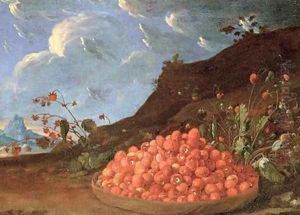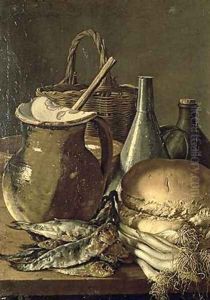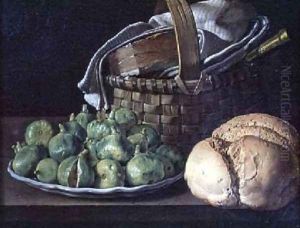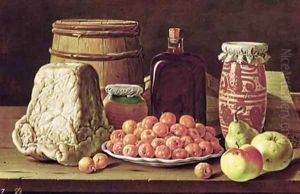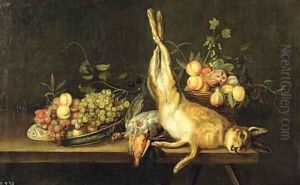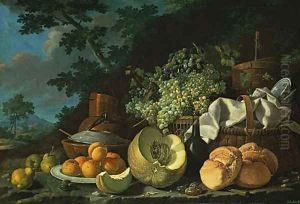Luis Egidio Menendez or Melendez Paintings
Luis Egidio Meléndez, born in 1716 in Naples, Italy, was a prominent Spanish painter renowned for his mastery in still life painting. His family moved to Spain when he was a young child, and his father, Francisco Antonio Meléndez, was a miniaturist painter who became one of his early instructors. Despite his Italian birth, Meléndez’s entire body of work and his stylistic development are firmly rooted in the Spanish artistic tradition.
Meléndez began his formal training at the Royal Academy of Fine Arts of Saint Fernando in Madrid, where he initially pursued a career in portraiture and religious subjects. However, due to a series of professional setbacks and conflicts with the artistic establishment, including a notable dispute that led to his expulsion from the Academy, Meléndez found himself drawn to the genre of still life. This shift marked the beginning of his most productive and celebrated period as an artist.
In the mid-18th century, still life painting was considered a lesser genre compared to historical or religious subjects. Despite this, Meléndez's still lifes demonstrated an unparalleled level of realism, attention to detail, and a profound understanding of light and texture, which elevated the genre to new heights. His compositions, often featuring kitchen items, food, and tableware, are noted for their simplicity and the artist’s ability to imbue them with a sense of dignity and beauty.
Perhaps the most significant chapter of his career began when he was appointed as a court painter to King Charles III of Spain. This position provided him with a steady income and the opportunity to produce a series of paintings intended for the Prince of Asturias, the future King Charles IV. These works were meant to serve both as artistic endeavors and educational tools, showcasing the wealth of the Spanish empire through its domestic produce. Unfortunately, Meléndez’s relationship with the court deteriorated, and by the late 1770s, he found himself once again struggling financially.
Luis Egidio Meléndez died in poverty in Madrid in 1780, largely forgotten by the art world. It was not until the 20th century that his work was rediscovered and appreciated for its contribution to the development of still life painting in Europe. Today, Meléndez is celebrated as one of the greatest still life painters of the 18th century, and his works are held in high esteem by museums and collectors worldwide.
